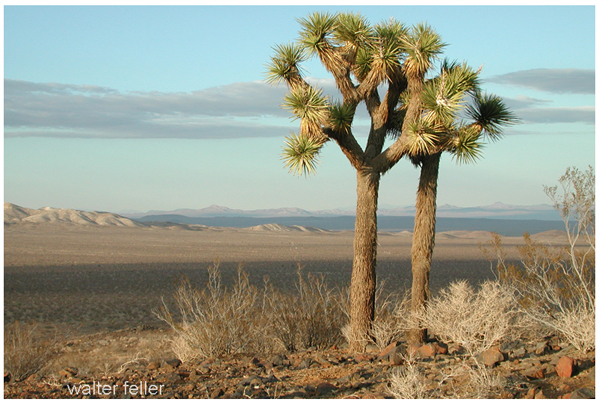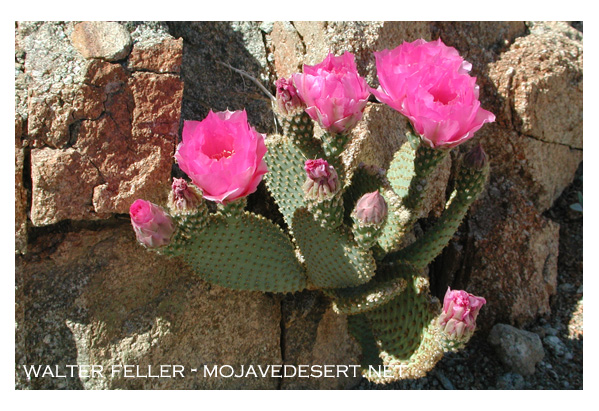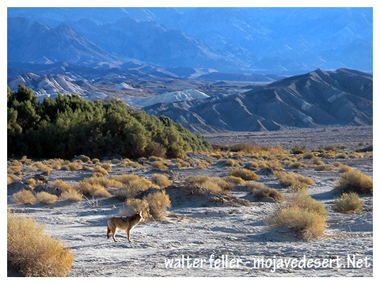https://mojavedesert.net/ecology
Introduction
The Mojave Desert, encompassing vast stretches across southeastern California, southern Nevada, and minor portions of Utah and Arizona, is a region of stark beauty and extremity. This desert is not just a barren wasteland but a vibrant biome with a unique blend of ecological, geological, and climatic elements. Each facet of the Mojave contributes to its distinctive landscape and the diversity of life that has adapted to thrive under some of the most challenging conditions on Earth. This essay will explore the intricate geology, dynamic climate, and resilient ecology of the Mojave Desert, revealing the complex interplay between these aspects that sustains life in this extraordinary desert biome.
Section 1: Geology of the Mojave Desert

Rainbow Basin – early morning
Geological Composition and Formation
The Mojave Desert’s dramatic landscape is sculpted from a geological past marked by intense tectonic activity and volcanic eruptions. The region predominantly features igneous and metamorphic rocks, interspersed with extensive sandy plains that have formed from the erosion of granite. These geological materials not only dictate the rugged aesthetics of the desert but also influence its ecological patterns.
Historical Development
The formation of the Mojave is primarily associated with the interactions between the North American and Pacific Plate. These tectonic plates’ movements have spurred a variety of geological phenomena, from the creation of fault lines to significant volcanic activity. The desert lies within the Basin and Range Province, characterized by its striking topography of narrow mountain ranges separated by broad valleys, directly resulting from crustal stretching.
Landscape Features
Notable geographical features of the Mojave include Death Valley, the lowest and one of the hottest places in North America, and the Joshua Tree National Park, famous for its rugged rock formations and iconic Joshua trees. These landmarks define the desert’s appearance and contribute to its geological diversity, which supports a range of ecosystems and influences the distribution of flora and fauna.
Section 2: Climate of the Mojave Desert

Characteristic Climate Conditions
The climate of the Mojave Desert is defined by extremity and variability, with scorching summers and chilly winters. This desert experiences some of the most extreme temperature fluctuations on the planet, with summer daytime temperatures often exceeding 100°F, while winter nights can plummet below freezing.
Seasonal Weather Patterns
Rainfall in the Mojave is minimal and unpredictable, typically less than two inches annually, making it one of the driest regions in the United States. Water scarcity profoundly affects the desert’s geological and ecological aspects, shaping its landscape and the life forms it supports.
Impact on Desert Landscape
The harsh climatic conditions have significantly influenced the desert’s soil composition and erosion patterns and determined water availability. These factors force plants and animals in the Mojave to evolve specialized adaptations to manage the limited resources efficiently.
Section 3: Ecology of the Mojave Desert
Flora and Adaptations

The vegetation of the Mojave is as resilient as it is varied, with species like the Joshua tree, creosote bush, and numerous cacti having developed remarkable adaptations to conserve water and minimize sun exposure. These plants are crucial for stabilizing the desert soil and providing essential resources for other organisms.
Fauna and Ecological Niches

The desert is home to various animals uniquely adapted to its extreme environment. Species such as the desert tortoise, known for its longevity, the cunning coyote, and the elusive bighorn sheep thrive here by optimizing their physiological and behavioral traits to conserve water and regulate body temperature.
Ecological Interactions
Ecological interactions in the Mojave are intricate, with each species playing a vital role in maintaining the balance of the ecosystem. Predatory birds and mammals help control the populations of smaller animals and insects, ensuring a dynamic but stable ecosystem despite challenging conditions.
Conclusion
The Mojave Desert is a biome of exceptional resilience and beauty, epitomizing the remarkable adaptability of life. Understanding its geology, climate, and ecology offers profound insights into how diverse life forms survive and thrive in one of the planet’s most inhospitable landscapes. The Mojave is a vivid example of ecological balance and adaptation, providing valuable lessons on resilience and sustainability.
This essay provides a comprehensive overview of the Mojave Desert’s natural aspects, designed to educate and engage general readers interested in one of North America’s most fascinating biomes.

